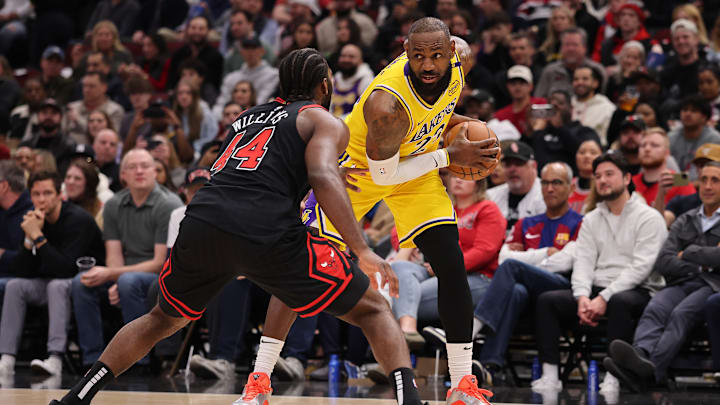The Chicago Bulls' post-All-Star break success cannot be overstated. The Bulls are 11-8 following the midseason festivities, owning a top-10 net rating in the NBA. Josh Giddey and Coby White have enjoyed second-half breakouts, taking their games' to the next level.
Giddey is averaging a near triple-double since the All-Star break. The fourth-year guard has averaged 21.7 points, 10.3 rebounds, and 8.9 assists while splashing 49.2 percent of his three-point attempts. Giddey's backcourt-mate, White, has won two Eastern Conference Player of the Week honors in March alone. He's up to 26.2 points per game on 48.4/36.1/89.1 shooting splits since the break.
Aside from the star duo, rookie Matas Buzelis has begun to come into his own. Buzelis is averaging 12.8 points since the All-Star break. He's been even better over the last week, averaging 20.3 points and 5.5 rebounds while shooting 53.8 percent from the field and 56.0 percent from three-point range.
Chicago's defense has seen a second-half revelation
Strong individual contributions are fantastic. Nevertheless, Chicago's collective effort to improve on the defensive end has paid dividends for the Bulls' post-All-Star break success. Since the break, the Bulls are eighth in the NBA in defensive net rating, at 112.3. Chicago has come a long way from its 116.4, 27th ranking pre-All-Star break.
Prior to the All-Star break, the Bulls allowed 120.7 points per game, the 29th-worst mark in the NBA. That number has improved to 116.8—the 19th-worst mark in the association. While it's an impressive development, points allowed don't even capture the Bulls' defensive turnaround. The Bulls have continued to play at one of the fastest paces in the league. Thus, points will be plenty.
Chicago allows its opponents to shoot 45.8 percent from the floor, the seventh-best mark in the NBA post-All-Star game. Before the mid-February break, the Bulls ranked 21st in opponents' field goal percentage at 47.3 percent. For what it's worth, the Bulls' opponents have also shot worse from three-point range in the latter half of the season despite already owning a top-three ranking to begin the season.
The Bulls must improve at forcing turnovers
Where the Bulls have struggled most is forcing turnovers. Chicago's opponents have turned it over just as often before and after the All-Star break, 12.5 giveaways per contest. While there's been a slight improvement in points off turnovers, it's not as drastic as Chicago's other progressions.
The Bulls scored 15.1 points per game off turnovers before the All-Star break. That average has only increased by 1.0, to 16.1 per game, post-All-Star. Chicago has been or continues to be less than stellar at forcing and converting on turnovers. Despite pacing the league in fast break points, the Bulls don't turn their opponents over nearly enough.
There's an avenue to an uptick in fast break points per game, which seems unimaginable for the league-leading Bulls. However, it can be done with a concerted effort to jump passing lanes and pester opponents to a greater degree. The Bulls don't roster many defensive playmakers, but forcing turnovers can be linked to effort. If Billy Donovan can get his squad to improve its defensive net rating to eighth in the NBA, there's no reason to believe Donovan can't be a catalyst in increasing Chicago's turnover-forcing opportunities.
The Bulls have improved in most defensive facets. Forcing more turnovers is the final straw. Once the Bulls begin forcing more turnovers and converting on the offensive end, their postseason ceiling will further improve.
